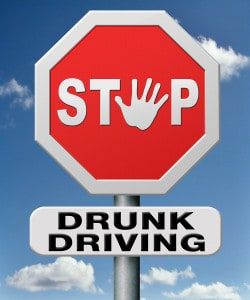 Although drunk driving-related traffic fatalities decreased from 10,136 in 2010 to 9,878 in 2011, drunk driving is still the deadliest and most often committed crime in the United States, according to the National Highway Traffic Safety Administration (NHTSA). Despite a nationwide legal blood alcohol concentration (BAC) limit of 0.08 and an increasing use of ignition interlocks, drunk driving continues to be the cause for more than 30 percent of total traffic deaths each year.
Although drunk driving-related traffic fatalities decreased from 10,136 in 2010 to 9,878 in 2011, drunk driving is still the deadliest and most often committed crime in the United States, according to the National Highway Traffic Safety Administration (NHTSA). Despite a nationwide legal blood alcohol concentration (BAC) limit of 0.08 and an increasing use of ignition interlocks, drunk driving continues to be the cause for more than 30 percent of total traffic deaths each year.
Throughout the year, organizations such as Mothers Against Drunk Driving (MADD) and the NHTSA combat impaired driving through campaigns and events designed to raise public awareness about the dangers of impaired driving, get impaired drivers off the road, and save lives. MADD also plays an active role in affecting drunk driving-related legislation while the NHTSA created the Drive Sober Or Get Pulled Over campaign, a national drunk driving-enforcement crackdown held during times of the year when drunk driving is at a high, such winter holiday season.
However, organizations throughout the country fight drunk driving with full force during National Impaired Driving Prevention Month, held throughout the month of December every year. Also known as Drunk and Drugged Driving Prevention Month, the month-long event focuses on both drunk and drugged driving prevention by raising awareness of the dangers of operating a vehicle while under the influence of alcohol and drugs.
National Impaired Driving Prevention Month places special focus on drugged driving, a dangerous and growing problem that’s often overlooked. According to a 2007 survey conducted by the NHTSA, 1 in 8 weekend, nighttime drivers tested positive for illegal drugs. In 2009, 3,952 injured drivers tested positive for drugs.
Join in the fight against drunk and drugged driving this month (and throughout the entire year) by talking to your kids about the dangers of alcohol, drugs, and driving under the influence of either substance. Join educators, health care providers, and community leaders in raising awareness of drunk and drugged driving and in creating prevention programs designed to stop alcohol and drug abuse and impaired driving before they start.
And, of course, drink responsibly, don’t abuse alcohol or drugs (including prescription drugs), and never drive while impaired by drugs or alcohol or get into a vehicle with an impaired driver.
